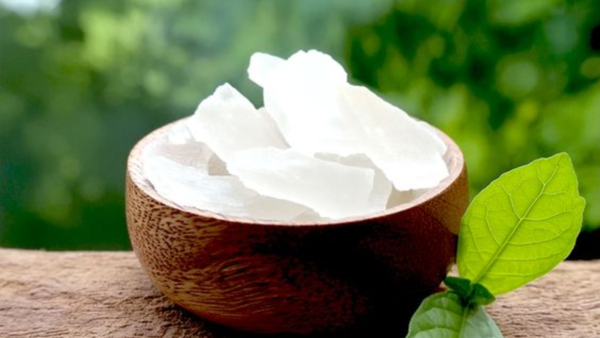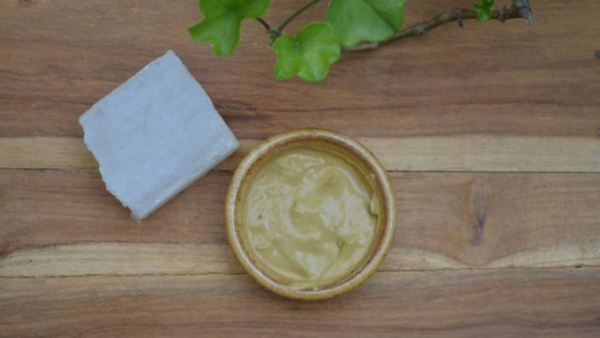Kapur or Fitkari: Which one should you include in your daily beauty routine?

Kapur (Camphor) has a strong odor and a pungent taste, appearing white with an oil-like texture. Camphor cubes can be converted into camphor oil through steam distillation. It is renowned for treating acne due to its antibacterial, antifungal, and anti-inflammatory properties.
Fitkari (Alum) is a naturally occurring potassium salt with a white or colorless appearance.Commonly used in natural deodorants, alum tightens and shrinks skin tissues, reducing the appearance of pores, and has antiseptic properties. Let’s compare their properties to determine which is better suited for your skincare routine.
(Image Credits: Pinterest)
Relief from irritated and itchy skin
Camphor’s antibacterial and antifungal properties can relieve itchy and irritated skin by promoting the production of collagen and elastin. Alum acts as an astringent, causing proteins in skin cells to coagulate, which tightens pores and reduces redness and irritation. It also helps control excess oil production.
Prevention of acne
Alum can prevent infections in minor cuts and scrapes, making it a common aftershave for men. It acts as an antiseptic, reducing bacteria responsible for acne breakouts. Camphor also helps treat acne due to its antibacterial benefits and bioactive molecules, which address sebaceous glands and reduce acne bumps.
Brightening the skin
Camphor can enhance skin radiance, address uneven skin tone, and fade dark spots. Alum, with its astringent properties, lightens the skin by shrinking skin cells and removing excess oil. Regular use of alum can improve skin elasticity, contributing to a fresh and youthful appearance.
How to use
Kapur (Camphor): To create a simple camphor mask, crush 2-3 camphor tablets and mix them with honey and yogurt. Apply this mask to your face daily, leave it on for 15-20 minutes, and rinse off with water. Optimal results are usually seen after two weeks.
Fitkari (Alum): You can directly rub the stone on your wet face and body. For the face, crush some alum and mix it with rose water to create a thin paste. Use it as a mask or natural toner depending on the consistency.
(Image Credits: Pinterest)
The final word
Both camphor and alum are rich in skin-healing properties and are safe to use as they are derived from natural sources. Free from chemical additives, they are valuable in the cosmetic industry and represent ancient skincare practices.
Actress Samantha Ruth Prabhu’s New Look Shocks Fans – Concern Grows Over Drastic Change
Neither is superior to the other as both offer similar benefits for skin issues. However, the choice depends on your skin type. If you have sensitive skin, you might want to avoid using these, as their potent properties and rapid effects could be too harsh for delicate skin.
Source: times of india
Related Posts
- 5 foods you must have if want Korean Glass Skin
- I Asked the Coolest People I Know: What Makes an It-Girl Lip Balm?
- 7 hairstyles for women popular in 2025 weddings
- 12 Coconut Perfumes That Smell Like an Expensive Vacation (and Not Sunscreen)
- The 6 Hats Everyone Will Be Wearing Instead of Bucket Hats This Summer





